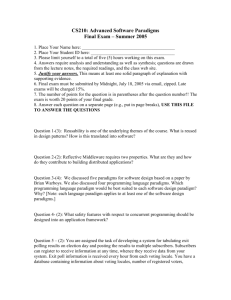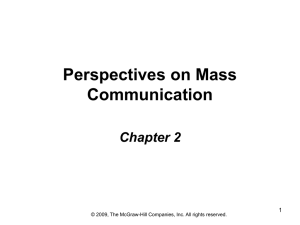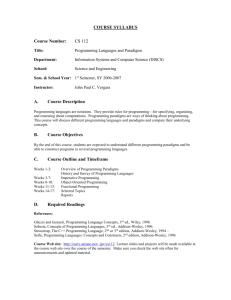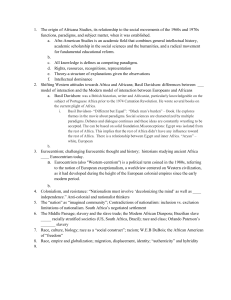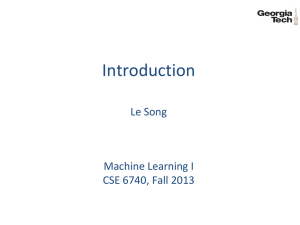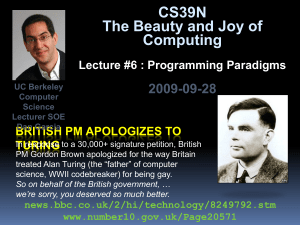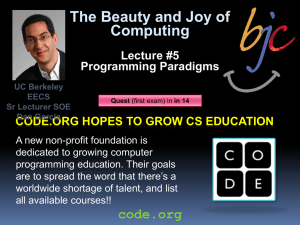How to Write a Literature Review Andy Hira Updated: Jan. 28, 09
advertisement
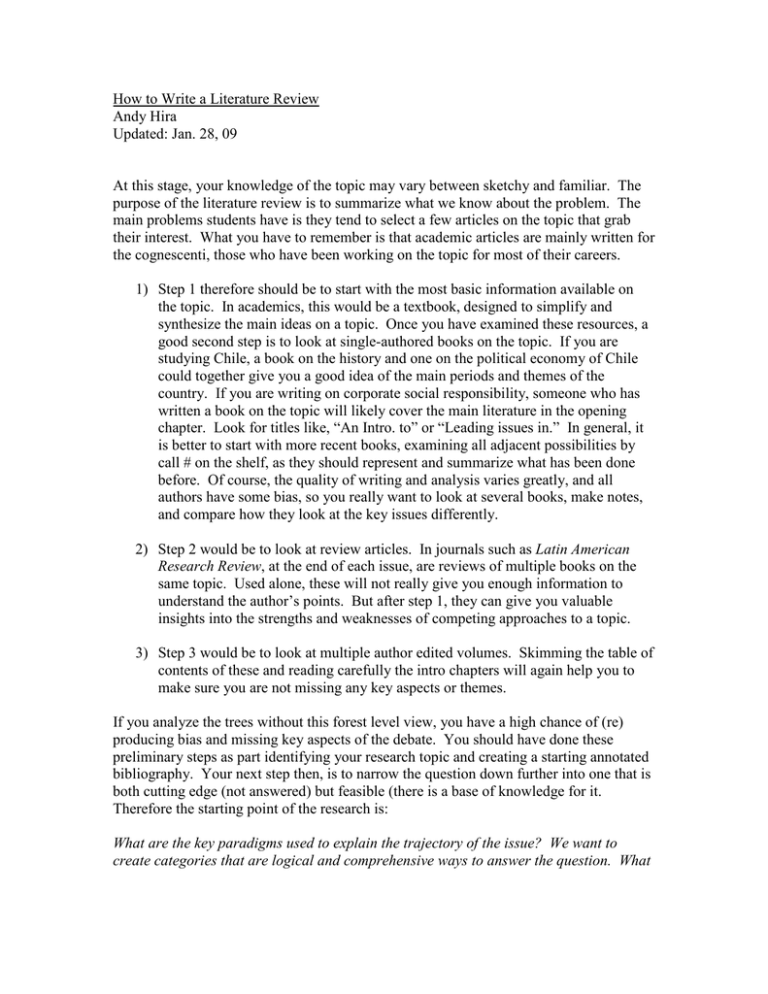
How to Write a Literature Review Andy Hira Updated: Jan. 28, 09 At this stage, your knowledge of the topic may vary between sketchy and familiar. The purpose of the literature review is to summarize what we know about the problem. The main problems students have is they tend to select a few articles on the topic that grab their interest. What you have to remember is that academic articles are mainly written for the cognescenti, those who have been working on the topic for most of their careers. 1) Step 1 therefore should be to start with the most basic information available on the topic. In academics, this would be a textbook, designed to simplify and synthesize the main ideas on a topic. Once you have examined these resources, a good second step is to look at single-authored books on the topic. If you are studying Chile, a book on the history and one on the political economy of Chile could together give you a good idea of the main periods and themes of the country. If you are writing on corporate social responsibility, someone who has written a book on the topic will likely cover the main literature in the opening chapter. Look for titles like, “An Intro. to” or “Leading issues in.” In general, it is better to start with more recent books, examining all adjacent possibilities by call # on the shelf, as they should represent and summarize what has been done before. Of course, the quality of writing and analysis varies greatly, and all authors have some bias, so you really want to look at several books, make notes, and compare how they look at the key issues differently. 2) Step 2 would be to look at review articles. In journals such as Latin American Research Review, at the end of each issue, are reviews of multiple books on the same topic. Used alone, these will not really give you enough information to understand the author’s points. But after step 1, they can give you valuable insights into the strengths and weaknesses of competing approaches to a topic. 3) Step 3 would be to look at multiple author edited volumes. Skimming the table of contents of these and reading carefully the intro chapters will again help you to make sure you are not missing any key aspects or themes. If you analyze the trees without this forest level view, you have a high chance of (re) producing bias and missing key aspects of the debate. You should have done these preliminary steps as part identifying your research topic and creating a starting annotated bibliography. Your next step then, is to narrow the question down further into one that is both cutting edge (not answered) but feasible (there is a base of knowledge for it. Therefore the starting point of the research is: What are the key paradigms used to explain the trajectory of the issue? We want to create categories that are logical and comprehensive ways to answer the question. What helps to explain the differences in those paradigms? What kind of variables, methods, and data help to explain these differences? Trying to answer this question leads us to the following steps that will help us to further refine the question. 4) Step 4 is to gather articles that represent the different categories or paradigms that you have identified. You will want to sort them out in your annotated bibliography and begin to note the ones that seem particularly helpful. 5) Step 5 is to begin a rough draft of your literature review. Remember, you are citing only samples of each paradigm and not everything you have reviewed. You are writing a comparative analysis of what the different paradigms say in answer to the question. Now you have identified which batch of trees you will focus on, or which specific problem that occurs in multiple parts of the forest. 6) Step 6 is to make a catalogue of what data are available and to prepare some basic excel charts on the overall trajectory. For a country, the main exports and imports over time. For an issue such as education, what data are available and what do they say, eg how has overall literacy changed over time; how has female participation, etc. Here your previous steps will help you to hone in on what are the foundational and contentious variables in the discussion. It will also give you a reality check as to which paradigms seem to match up with reality. 7) Step 7 is the time to go back to your rough draft and rewrite from your own point of view. Here is how I evaluate the different paradigms and their relative strengths and weaknesses. Here is where they come up short, for example, through not grappling with a new problem (outdated), being subjective and not matching up with basic data, or being contradictory with each other. This will lead you to the next step, which is how you will seek to answer this conundrum through your own original research. Then go back and re-write your question again so that there is a clear flow, distillation from top to bottom. At first glance, this could be a monumental task. However, if you approach this task with purposefulness and with a deliberate, daily discipline, you will achieve a deep understanding of the issue in a short period of time. You want to make sure that you do not read word for word. What you are doing is scanning information, reading particular areas carefully, in order to answer the question at hand. I am available for discussion and feedback as you progress.
